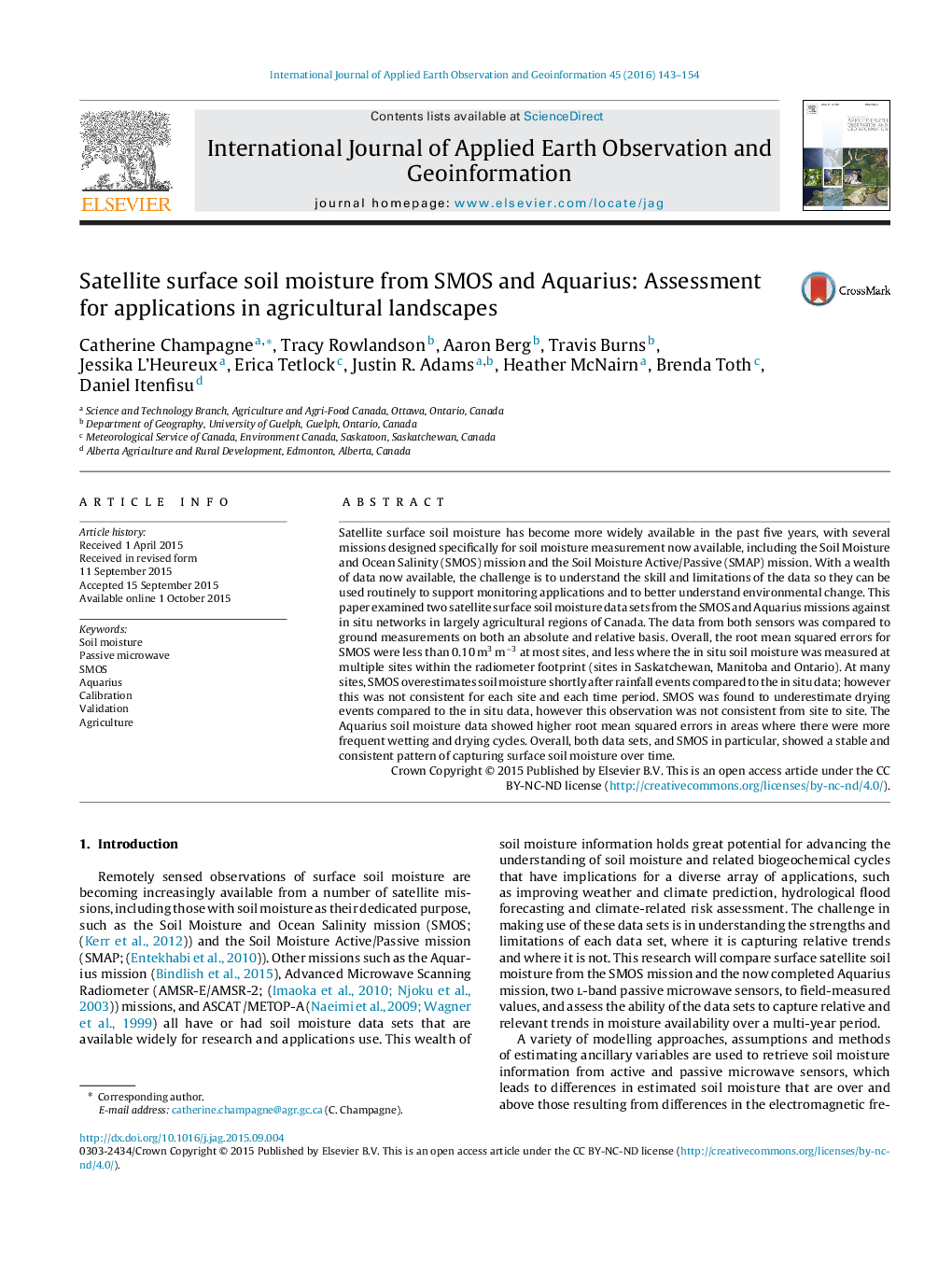| Article ID | Journal | Published Year | Pages | File Type |
|---|---|---|---|---|
| 6348563 | International Journal of Applied Earth Observation and Geoinformation | 2016 | 12 Pages |
Abstract
Satellite surface soil moisture has become more widely available in the past five years, with several missions designed specifically for soil moisture measurement now available, including the Soil Moisture and Ocean Salinity (SMOS) mission and the Soil Moisture Active/Passive (SMAP) mission. With a wealth of data now available, the challenge is to understand the skill and limitations of the data so they can be used routinely to support monitoring applications and to better understand environmental change. This paper examined two satellite surface soil moisture data sets from the SMOS and Aquarius missions against in situ networks in largely agricultural regions of Canada. The data from both sensors was compared to ground measurements on both an absolute and relative basis. Overall, the root mean squared errors for SMOS were less than 0.10Â m3Â mâ3 at most sites, and less where the in situ soil moisture was measured at multiple sites within the radiometer footprint (sites in Saskatchewan, Manitoba and Ontario). At many sites, SMOS overestimates soil moisture shortly after rainfall events compared to the in situ data; however this was not consistent for each site and each time period. SMOS was found to underestimate drying events compared to the in situ data, however this observation was not consistent from site to site. The Aquarius soil moisture data showed higher root mean squared errors in areas where there were more frequent wetting and drying cycles. Overall, both data sets, and SMOS in particular, showed a stable and consistent pattern of capturing surface soil moisture over time.
Related Topics
Physical Sciences and Engineering
Earth and Planetary Sciences
Computers in Earth Sciences
Authors
Catherine Champagne, Tracy Rowlandson, Aaron Berg, Travis Burns, Jessika L'Heureux, Erica Tetlock, Justin R. Adams, Heather McNairn, Brenda Toth, Daniel Itenfisu,
